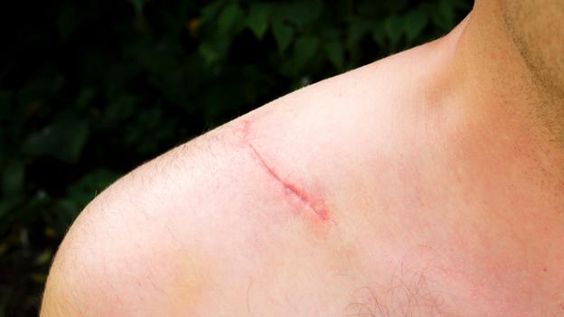In the process of wound healing, scar formation is an inevitable factor. Although scarring is unpredictable, a few preventive measures can help reduce it. Generally speaking, when the body is injured, the immune system releases various cytokines and growth factors to promote wound repair and healing.
Specifically, the process of wound healing can be divided into the following stages:
After a wound is injured, the inflammatory response starts to kick in. Inflammatory cytokines and chemicals are released, causing an inflammatory response. The inflammatory response helps clear damaged tissue, protects against infection, and supports subsequent repair. Following the inflammatory response, granulation tissue begins to form. Granulation tissue is composed of new epithelial cells, capillaries, fibroblasts, etc., and is designed to fill the wound. After granulation tissue is formed, wound repair begins. This stage involves the participation of many cells, including epithelial cells, fibroblasts, and vascular endothelial cells. These cells secrete various biologically active substances, such as collagen, elastin, etc., to fill the wound and gradually smooth the wound. In the final stages of wound healing, scar tissue forms. Scar tissue is composed of structural proteins such as collagen fibers and elastic fibers, designed to maintain wound stability and prevent excessive contraction. However, if the scar tissue grows excessively or is poorly formed, it may cause pain, itching, and cosmetic problems.
Overall, wound healing is a complex biological process involving the participation of various cells and bioactive substances. Proper care and treatment can help speed up wound healing and reduce the risk of scarring.
Scars are divided into the following types:
Hypertrophic scars: Hypertrophic scars are one of the most common types of scars that occur during wound healing. It grows gradually as the wound heals, usually within a few weeks after the stitches are removed. These scars are usually reddish or pink in color and soft in texture.
Flattened scars: Flattened scars are another common type of scar. This type of scar usually appears when the skin has suffered a moderate injury or a deep burn. Flattened scars are usually not raised, but have a flat appearance and are usually skin tone or light pink in color.
Atrophic scars: Atrophic scars are usually caused by excessive stretching or tearing of the skin. These scars are usually reddish or pink in color, soft in texture, and tend to be sunken.
Bridge scars: Bridge scars usually appear on the basis of scar hyperplasia and present a bridge-shaped appearance. These scars usually appear on the face and other exposed areas and can have a major impact on personal appearance.
Hyperpigmented Scars: Hyperpigmented scars are pigmented changes that are common after a wound has healed. These scars usually appear in people with dark skin and appear as dark marks left by wounds that have healed.
The above are the common types of scars. Different types of scars have different characteristics and need to be treated according to specific conditions.
Here are some ways to heal wounds and prevent scarring:
1. Use Silicone Scar Dressing: Use Silicone Scar Dressing after the wound is closed for several months to reduce the size, hardness, redness, itching, or stiffness of the scar. They also keep scars from raising.
2. Avoid friction: During the wound healing period, avoid strenuous exercise or activities, so as not to rub the wound and delay wound healing.
3. Use Vitamin E: Vitamin E is a natural antioxidant that can help reduce the formation of scars. A vitamin E capsule can be punctured and its liquid applied to the wound.
4. Cryosurgery: This treatment freezes the scar to destroy the scar tissue, thereby reducing the size, pain, itching, firmness, and discoloration of the scar.
5. Compression therapy: This therapy involves applying pressure with a pressure garment to the dressing as the wound heals to reduce scarring or prevent keloids from forming or recurring. When the dressing is no longer needed, treatment with the compression garment can continue.
In summary, preventing scarring involves keeping clean and dry, avoiding friction, using scar inhibitors, avoiding chemical-based creams, eating a healthy diet, and using scar removal products. These methods can effectively prevent the formation of scars.
For more information on Innomed® Silicone Scar Dressing, refer to the previous articles. If you have customized needs, you are welcome to contact us; we will serve you wholeheartedly. At Longterm Medical, we transform this data by innovating and developing products that make life easier for those who need loving care.
Editor: kiki Jia
Date: April 25, 2023

 English
English عربى
عربى Español
Español русский
русский 中文简体
中文简体








